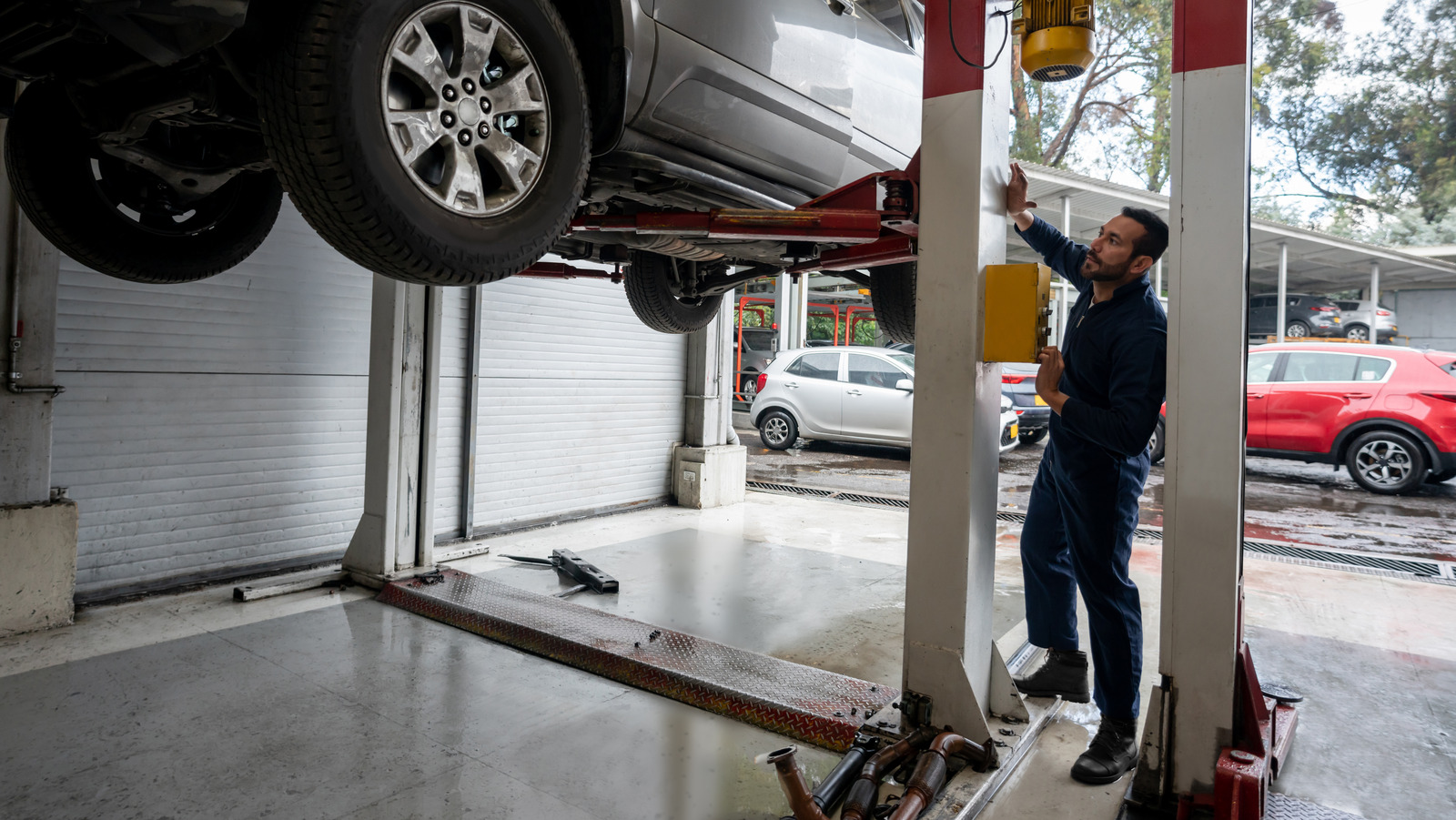How to Dynamically Adjust Content Div Height in jQuery?
Introduction In modern web development, creating a dynamic user experience is crucial. One common scenario involves loading different pages into a content div on user interaction while needing to adjust its height dynamically for proper layout. In this article, we will address a specific challenge: ensuring the height of a content div updates correctly when different pages are loaded into it via jQuery. To illustrate this issue, suppose we have a setup where the height of the content div is first determined at page load with some initial content, but when we replace that content dynamically, the height does not adjust accordingly. This can lead to unexpected layout shifts and user experience issues. Let's dive deeper into the reasons behind this and explore a practical solution. Understanding the Issue When a user first loads a page, we may have a content div that dynamically pulls in a large amount of content (like 6000px in height). However, upon triggering a click event to load a shorter page, say 500px or 300px, the content div’s height remains at its initial value (6000px). This is because the height gets set when the content loads initially and does not automatically re-calculate when new content is replaced. This can be problematic for many web applications, especially those that rely on precise layouts to display additional elements or wrappers accordingly. To alleviate this issue, we need to ensure that our jQuery logic re-evaluates the height of the content div after loading new content. Solution: Modifying the jQuery Logic To effectively solve this problem, we’ll adjust the jQuery code to re-calculate the height of the #content div each time new content is loaded. Here is a step-by-step implementation: Step 1: Initial Setup Make sure you have an HTML structure similar to the one below: page1 page2 Step 2: Load Initial Content Modify the initial jQuery document ready function to load the first piece of content: $(document).ready(function() { // Load content on page load loadContent('projects'); // Load content on click $('.load').click(function() { loadContent($(this).attr('id')); }); }); Step 3: Create a Load Function This will centralize the logic of loading content and adjusting the height: function loadContent(page) { $('#content').html('Loading Content...').load(`/content/${page}.php`, null, function() { adjustHeight(); }); } Step 4: Implement the Height Adjustment Create a function to handle the height adjustment: function adjustHeight() { const contentHeight = $('#content').height(); const selectHeight = $('#select').height(); $('#spacer').css({ 'top': selectHeight + 40 + 'px', 'height': contentHeight + 'px', 'display': contentHeight > selectHeight ? 'block' : 'none' }); } Final Summary of the Code Putting it all together, your complete jQuery snippet ensures dynamic adjustment of the content div's height whenever a new page is loaded via user interaction. Here’s the complete setup: $(document).ready(function() { // Load content on page load loadContent('projects'); // Load content on click $('.load').click(function() { loadContent($(this).attr('id')); }); }); function loadContent(page) { $('#content').html('Loading Content...').load(`/content/${page}.php`, null, function() { adjustHeight(); }); } function adjustHeight() { const contentHeight = $('#content').height(); const selectHeight = $('#select').height(); $('#spacer').css({ 'top': selectHeight + 40 + 'px', 'height': contentHeight + 'px', 'display': contentHeight > selectHeight ? 'block' : 'none' }); } Conclusion By implementing these methods, you can achieve a fully responsive content div that properly adjusts its height according to the new content loaded. This enhances the usability of your web application and provides users with a consistent experience. Make sure to test the changes across different browsers to confirm compatibility and performance. Frequently Asked Questions Why does my content div height not adjust properly? When new content is loaded into the content div, the height does not automatically update because it is set only once on load. Properly addressing this requires dynamically re-calculating the height with JavaScript or jQuery each time content loads. How can I ensure seamless transitions between loaded pages? Using fading effects or animations while loading new content can enhance user experience. Consider utilizing jQuery’s fadeIn and fadeOut methods for smoother transitions. Is it necessary to adjust the height of the spacer element? Yes, adjusting the spacer height according to the content div is essential to maintain a consistent layout and prevent overlaps with other components on the page.

Introduction
In modern web development, creating a dynamic user experience is crucial. One common scenario involves loading different pages into a content div on user interaction while needing to adjust its height dynamically for proper layout. In this article, we will address a specific challenge: ensuring the height of a content div updates correctly when different pages are loaded into it via jQuery.
To illustrate this issue, suppose we have a setup where the height of the content div is first determined at page load with some initial content, but when we replace that content dynamically, the height does not adjust accordingly. This can lead to unexpected layout shifts and user experience issues. Let's dive deeper into the reasons behind this and explore a practical solution.
Understanding the Issue
When a user first loads a page, we may have a content div that dynamically pulls in a large amount of content (like 6000px in height). However, upon triggering a click event to load a shorter page, say 500px or 300px, the content div’s height remains at its initial value (6000px). This is because the height gets set when the content loads initially and does not automatically re-calculate when new content is replaced.
This can be problematic for many web applications, especially those that rely on precise layouts to display additional elements or wrappers accordingly. To alleviate this issue, we need to ensure that our jQuery logic re-evaluates the height of the content div after loading new content.
Solution: Modifying the jQuery Logic
To effectively solve this problem, we’ll adjust the jQuery code to re-calculate the height of the #content div each time new content is loaded. Here is a step-by-step implementation:
Step 1: Initial Setup
Make sure you have an HTML structure similar to the one below:
Step 2: Load Initial Content
Modify the initial jQuery document ready function to load the first piece of content:
$(document).ready(function() {
// Load content on page load
loadContent('projects');
// Load content on click
$('.load').click(function() {
loadContent($(this).attr('id'));
});
});
Step 3: Create a Load Function
This will centralize the logic of loading content and adjusting the height:
function loadContent(page) {
$('#content').html('- Loading Content...
').load(`/content/${page}.php`, null, function() {
adjustHeight();
});
}
Step 4: Implement the Height Adjustment
Create a function to handle the height adjustment:
function adjustHeight() {
const contentHeight = $('#content').height();
const selectHeight = $('#select').height();
$('#spacer').css({
'top': selectHeight + 40 + 'px',
'height': contentHeight + 'px',
'display': contentHeight > selectHeight ? 'block' : 'none'
});
}
Final Summary of the Code
Putting it all together, your complete jQuery snippet ensures dynamic adjustment of the content div's height whenever a new page is loaded via user interaction. Here’s the complete setup:
$(document).ready(function() {
// Load content on page load
loadContent('projects');
// Load content on click
$('.load').click(function() {
loadContent($(this).attr('id'));
});
});
function loadContent(page) {
$('#content').html('- Loading Content...
').load(`/content/${page}.php`, null, function() {
adjustHeight();
});
}
function adjustHeight() {
const contentHeight = $('#content').height();
const selectHeight = $('#select').height();
$('#spacer').css({
'top': selectHeight + 40 + 'px',
'height': contentHeight + 'px',
'display': contentHeight > selectHeight ? 'block' : 'none'
});
}
Conclusion
By implementing these methods, you can achieve a fully responsive content div that properly adjusts its height according to the new content loaded. This enhances the usability of your web application and provides users with a consistent experience. Make sure to test the changes across different browsers to confirm compatibility and performance.
Frequently Asked Questions
Why does my content div height not adjust properly?
When new content is loaded into the content div, the height does not automatically update because it is set only once on load. Properly addressing this requires dynamically re-calculating the height with JavaScript or jQuery each time content loads.
How can I ensure seamless transitions between loaded pages?
Using fading effects or animations while loading new content can enhance user experience. Consider utilizing jQuery’s fadeIn and fadeOut methods for smoother transitions.
Is it necessary to adjust the height of the spacer element?
Yes, adjusting the spacer height according to the content div is essential to maintain a consistent layout and prevent overlaps with other components on the page.










































































![Apple Foldable iPhone to Feature New Display Tech, 19% Thinner Panel [Rumor]](https://www.iclarified.com/images/news/97271/97271/97271-640.jpg)
![Apple Shares New Mother's Day Ad: 'A Gift for Mom' [Video]](https://www.iclarified.com/images/news/97267/97267/97267-640.jpg)
![Apple Developing New Chips for Smart Glasses, Macs, AI Servers [Report]](https://www.iclarified.com/images/news/97269/97269/97269-640.jpg)
![Apple Shares Official Trailer for 'Stick' Starring Owen Wilson [Video]](https://www.iclarified.com/images/news/97264/97264/97264-640.jpg)













































































































 Evolved as a Predominant Framework for Ransomware Attacks.webp?#)



_Aleksey_Funtap_Alamy.jpg?width=1280&auto=webp&quality=80&disable=upscale#)
_Sergey_Tarasov_Alamy.jpg?width=1280&auto=webp&quality=80&disable=upscale#)


























































































































![[The AI Show Episode 146]: Rise of “AI-First” Companies, AI Job Disruption, GPT-4o Update Gets Rolled Back, How Big Consulting Firms Use AI, and Meta AI App](https://www.marketingaiinstitute.com/hubfs/ep%20146%20cover.png)


































































































































































































































































